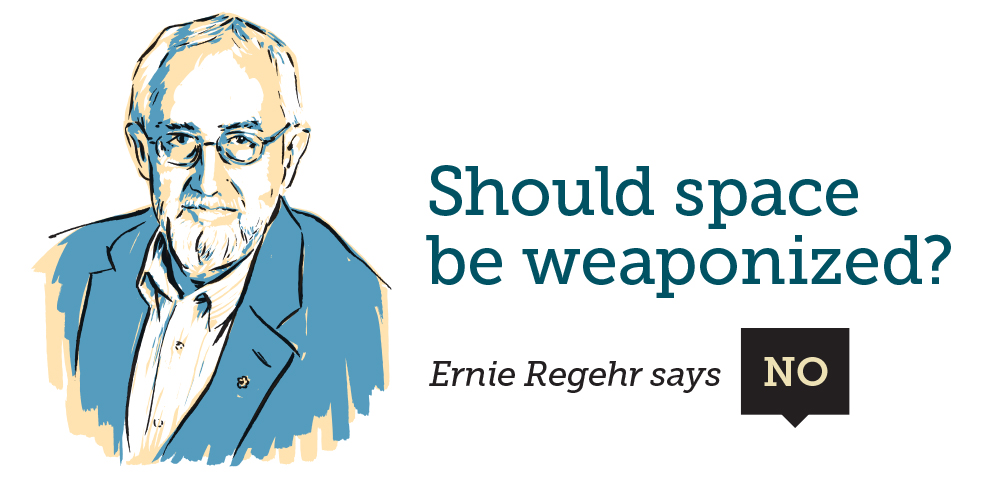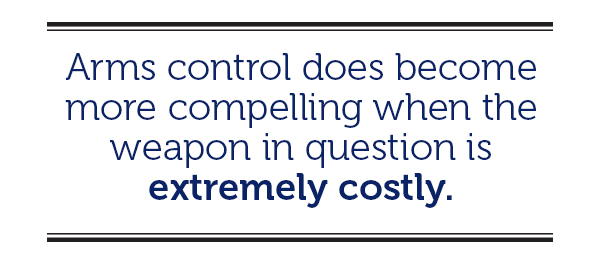
In late March, India announced that it had successfully shot down one of its own satellites using an interceptor fired from the ground. In doing so, India became only the fourth nation to gain this capacity after the United States, Russia and China. The move brought the weaponization of space even closer, adding to steps that have been taken ever since the launch of the first military communications and reconnaissance satellites in the 1960s.
As much as any of us may have wished this would not happen, it was almost inevitable. Few human inventions have been brought to fruition without military purposes in mind. Whatever new technologies humans invent and for whatever purpose, military applications and weapons are not far behind.
Take the weaponization of the airplane as an example. Following the Wright brothers’ first successful airplane flight in 1903, militaries in several nations immediately saw the potential for reconnaissance using winged aircraft. After all, tethered balloons had been used for decades to observe enemy movements and even to guide artillery fire onto the enemy. It was a natural step to use airplanes to supplement these roles. And how to stop airplanes from observing troops? Shoot them down.
In October 1911, during the Italo-Turkish War, the Italian flyer Carlo Piazza got the notion of bringing small bombs with him in his French-built Blériot aircraft and dropping them on the enemy. Shortly thereafter, pilots began carrying rifles and pistols with them to shoot at other enemy aircraft. With the outbreak of the First World War, machine guns supplanted rifles and pistols and regular air-to-air combat began.

It is now more than 60 years since the Soviets first launched Sputnik into space. It is taking a lot longer to weaponize space because the technical problems of designing satellites to destroy one another are great, let alone the fanciful notion that satellites might someday rain destruction on the earth.
Why use space-based platforms to attack when a wide variety of ground-based platforms, many guided by satellites, can accomplish the task well enough? Bombers, fighter aircraft and missiles can rain destruction on any location, guided by military reconnaissance satellites. Militarization has already taken place, can weaponization be far behind?

The high frontier, as it has been called, is now the basis of global communications systems, global reconnaissance, space-based communications that tie radar and communications systems to fighter aircraft, strategic reconnaissance aircraft, bombers, naval platforms and military expeditionary forces. It is the basis of our banking and communications systems.
The weaponization of space—the use of space weapons to attack and destroy these vital links—is already underway. Can anyone doubt that the world’s foremost military powers are devising ways to destroy satellites from space? The “hard” weaponization of space is inevitable. We in Canada have too many space-based assets to be sanguine about the future. Just as we need jet interceptors, we will need space weapons to defend ourselves.

The secure and uninterrupted operation of satellites has become an essential requirement for contemporary civil-ian life and military operations. Communications, earth observation, navigation, positioning and scientific/technological advancement are all heavily dependent on satellites that are increasingly vulnerable to space debris and deliberate attack.
In the past two years, new satellites were launched at the rate of more than one per day, joining some 2,000-plus currently operational satellites, 3,000-plus defunct satellites, and hundreds of thousands of pieces of debris that circle the planet. Some 30,000 pieces of that celestial garbage measure more than 10 centimetres across and, travelling at 8 kilometres per second, a collision means total destruction and still more debris.
Weaponization of space consists of weapons aimed at space and weapons based in space. The former is being actively pursued and the latter more tentatively, owing primarily to complexity and cost. The United States, Russia, China and India have demonstrated anti-satellite (ASAT) weapon capacity, while the two Koreas, Japan, Iran and Israel are among states that could pursue ASAT capabilities.
A weapon deployed in space (for example, a weaponized laser beam) would immediately become a very expensive sitting duck, for the same reasons that any satellite is vulnerable to ASAT attack: they follow predictable orbital paths and lack evasive manoeuvrability.
The main result would be heightened insecurity throughout space due to an accelerating rash of ASAT testing and deployment that would surely follow.
The security of assets in space ultimately depends on norms and political/legal instruments to constrain both forms of weaponization, which is why non-weaponization of space has been a widely supported international objective ever since Sputnik.

The 1967 Outer Space Treaty bans the deployment of nuclear weapons in space. That treaty and the UN Committee on the Peaceful Uses of Outer Space both set out principles meant to preserve space for exclusively peaceful purposes and to maintain it as an operationally stable and safe environment.
Given the currently low appetite for arms control, to put it kindly, those admirable sentiments aren’t about to be converted into binding treaties. But there is still room to build norms and encourage safer practices. For example, states that remain intent on ASAT testing should at least be challenged to avoid direct hits on hard targets in space, generating more dangerous space debris.
However, preventing space weaponization requires more. It means putting the brakes on the current active development of weapons aimed at space and shelving aspirations to bring weapons based in space out of science fiction and into real military arsenals. Even in the current political climate, arms control does become more compelling when the weapon in question is extremely costly, untested and highly vulnerable to military counterattack. And that pretty much describes weapons based in space.
Another condition conducive to successful arms control also applies. Neither form of space weaponization—aimed at or based in space—is yet widely deployed, so it’s still a matter of deciding not to go down that perilous road, rather than having to shift into reverse on a road already taken.
Advertisement












